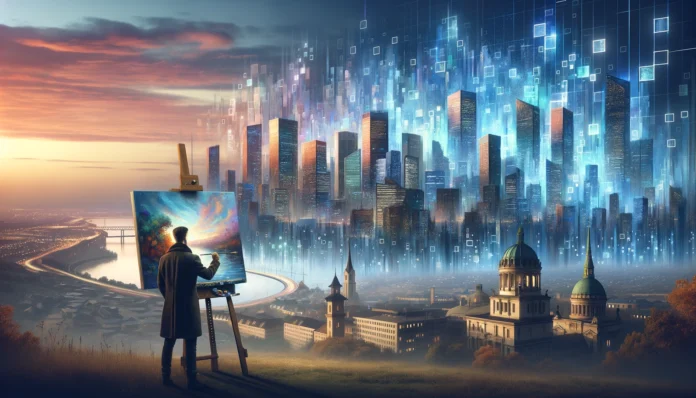Art has always been a reflection of human imagination and ingenuity. From the earliest cave paintings to the masterpieces of the Renaissance, artists have sought to capture the essence of the world around them through various mediums. However, in the age of technological advancement, a new frontier has emerged where the boundaries between human creativity and artificial intelligence (AI) are becoming increasingly blurred. This intersection of AI and creative expression is reshaping the landscape of art in profound ways, offering both challenges and opportunities for artists, technologists, and audiences alike.
One of the most intriguing aspects of AI-driven art is its ability to challenge traditional notions of authorship and creativity. With AI algorithms capable of generating original artworks based on vast datasets of images, texts, and other forms of media, questions arise about the role of the artist in the creative process. While some argue that AI-generated art lacks the human touch and emotional depth of traditional art, others see it as a new form of collaboration between humans and machines, pushing the boundaries of what is possible in the realm of artistic expression.
One prominent example of AI-driven art is the use of generative adversarial networks (GANs) to create images that blur the line between reality and imagination. These algorithms consist of two neural networks – a generator and a discriminator – that work in tandem to produce increasingly realistic images. By training on large datasets of images, GANs can generate visually stunning artworks that mimic the style of famous painters or invent entirely new aesthetic forms. This approach has led to the creation of mesmerizing landscapes, surreal portraits, and abstract compositions that challenge our perceptions of art and reality.
Another area where AI is reshaping the art world is in the realm of art curation and recommendation. With the vast amount of digital art available online, navigating the sea of options can be overwhelming for both artists and collectors. AI algorithms can analyze user preferences, historical trends, and other factors to recommend artworks that are tailored to individual tastes. This not only helps artists reach new audiences but also allows art enthusiasts to discover new and exciting pieces that they may not have encountered otherwise.
However, the rise of AI in art also raises important questions about the future of creativity and the role of human artists in a world increasingly dominated by machines. While AI algorithms can generate impressive works of art, they lack the lived experiences, emotions, and cultural context that inform human creativity. As such, some argue that AI can never truly replace the unique perspective and creative intuition of human artists. Instead, AI should be seen as a tool to augment and enhance human creativity, rather than supplant it entirely.
Despite these challenges, the intersection of AI and creative expression holds immense potential for innovation and discovery. By embracing new technologies and exploring unconventional approaches to artmaking, artists can push the boundaries of what is possible and create truly groundbreaking works that captivate audiences around the world. Whether it’s through interactive installations, immersive virtual reality experiences, or AI-generated music compositions, the future of art promises to be as diverse and dynamic as the artists who create it.
In conclusion, the intersection of AI and creative expression represents a new frontier in the world of art, offering unprecedented opportunities for innovation and exploration. While AI-driven art presents challenges and questions about the nature of creativity, it also opens doors to new possibilities and ways of thinking about the artistic process. By embracing the potential of AI as a tool for artistic expression, artists can unlock new realms of imagination and create works that captivate and inspire audiences in ways never before possible.





